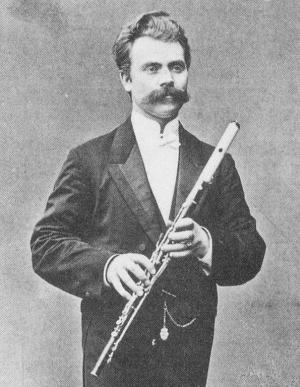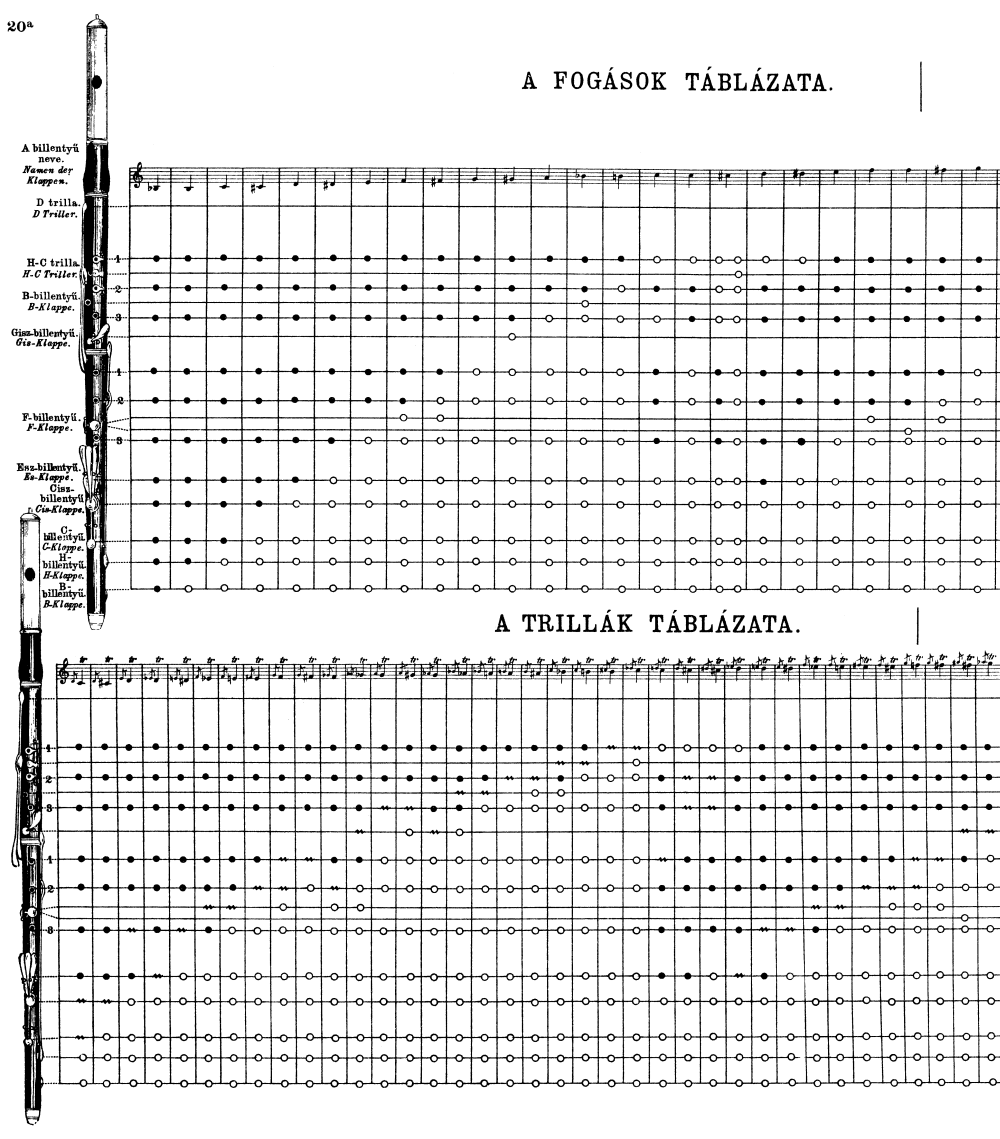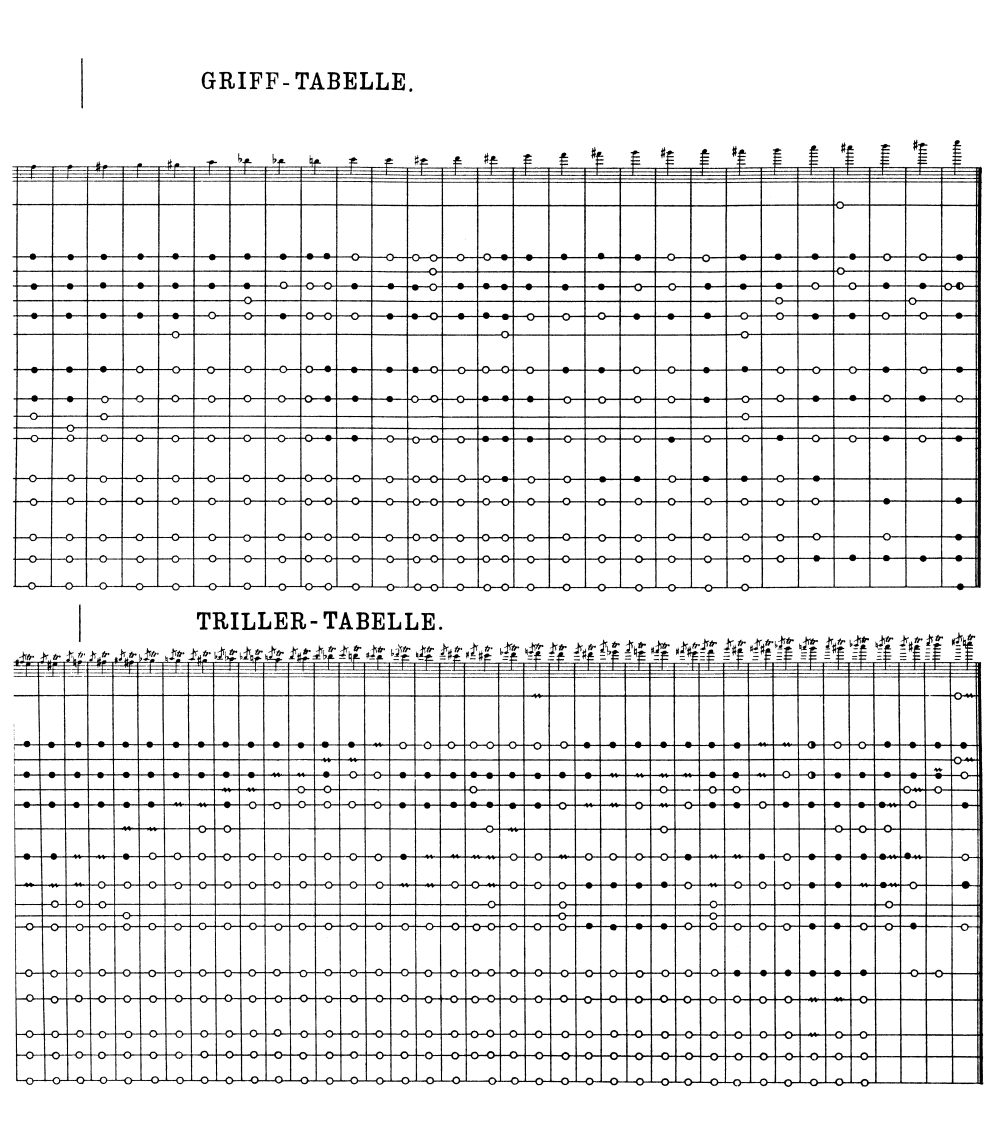Fingerings for a 15-key flute from Adolf Burose (c.1910)

Adolf Burose (b.1858)

Adolf Burose (b.1858)
Adolf Burose played a 15-key Viennese-style flute. His Neue Grosse Flötenschule was published in Budapest circa 1910. At that time he was first flutist with the Royal Hungarian Opera.
Burose's flute matches almost exactly the "Zeigler flute" as described by the flutist Paul Wetzger, in 1905 (Ziegler was a famous Viennese flute maker). Wetzger describes this type of simple system flute as having exactly TWO keys for each semitone outside the D major scale (see here), a B-foot, and a trill key for high e'''/d'''. Burose's flute had these keys but a longer foot, down to Bb. We know this because (1) many of these keys (in particular, the Bb foot and the long extra lever for D#, the former for the left little finger and the latter for the left hand thumb) are visible in the photograph above (from the Goldberg collection of 1906), and (2) he mentions each of these keys when he describes which fingers govern which keys on pages 11 and 12 of his method (with the exception that he omits mention of the short C key on the audience side of the flute, though I am sure his flute had this key). Shown below are two flutes that exactly match this description.

The engraving of a flute on Burose's fingering chart below does not exactly match Burose's instrument. It does show a Bb foot, but no duplicate keys are visible. (It seems also to show a brille mechanism for the first two holes, which mechanism Burose did not have.)
The method also includes a fingering chart for the Boehm flute, and four pages of exercises specifically for the Boehm flute. The chart for the Boehm flute extends from c' to c'''', while the chart for the simple system flute goes from bb to e''''.
At the beginning of Part 2 of his method, which consists of virtuoso etudes, Burose repeats the simple system fingerings for the fourth octave c#'''', d'''', d#'''', and e'''' (while saying nothing about the Boehm flute). But, except for long tones, these notes are not used in the etudes. The etudes routinely include the b''' and c'''' at the top of the third octave. The fingerings for the highest notes work quite well on the flute by Maino e Orsi shown above. (The Zimmermann does not have its original headjoint; these fingerings do not work so well on it.)

